By MATTHEW SALTMARSH
Published: January 5, 2011
GENEVA — When Bolivia wanted a list of standards drawn up for the trade in llama and alpaca meat, it turned to an unlikely source: the U.N. Economic Commission for Europe.
This little-known body, based in Geneva, published a 44-page report in 2008 offering global norms for the fat thickness and trimming of llama cuts, and the means of avoiding “ragged edges” and ensuring that “cross-sectional surfaces” form approximate right angles with the skin surface.
It also offered a color gauge for in-shell walnuts and walnut kernels, and recently a glossy 75-page brochure on red and green peppers, highlighting product characteristics for food traders to avoid, like mold or discoloration.
The United Nations is widely known for functions like peacekeeping, health programs, refugee support and the International Court of Justice. But those are just a part of its bureaucracy, whose size and structure still bewilder many of its own employees.
There are five big centers — New York, Geneva, Rome, Vienna and Nairobi — and numerous smaller ones. In Geneva alone, the United Nations held 10,000 meetings in 2009, offered 632 training workshops and translated 220,000 pages of documents for its yearbooks, reports, and working papers.
But in these difficult economic times, as many countries reduce their own services, critics are asking whether there is a case for putting this army of civil servants to work in a smarter, more streamlined manner.
“There’s huge redundancy and lack of efficiency,” said Mark Malloch Brown, deputy in 2006 to the secretary general at the time, Kofi Annan, “but it’s entirely the making of the member states, who want to pass certain resolutions and demand certain papers.”
There appears little prospect of genuine overhaul soon, given its size, the competing interests of its 192 member states, and the fact that the worst of the financial crisis may be over.
The frustration is often most pointed among those with exposure to the private sector, like Jean-Pierre Lehmann, professor of international political economy at the I.M.D. business school in Lausanne, Switzerland.
“Generally, the U.N. has been a terrible disappointment compared to the ideals with which it was established” after World War II, he said. “It serves as a gravy train for a very bloated employment system, and, yes, there is huge overlap between the agencies.”
In food standards, for example, the U.N. Economic Commission for Europe is far from alone, often examining the same issues as other U.N. bodies like the World Health Organization and the Food and Agriculture Organization. Its mandate also overlaps with national or regional agencies like the U.S. Food and Drug Administration and the European Food Safety Authority.
The United Nations itself is broadly divided into six parts, the best known of which are the secretariat, headed by the secretary general, Ban Ki-moon; the General Assembly; the Security Council; and the International Court of Justice. The other two are the Economic and Social Council and a Trusteeship Council.
Latest U.N. figures show it employs about 75,000 people, including those in related agencies, under a $5 billion annual budget. This excludes its 16 peacekeeping operations and the cost of several agencies financed by voluntary contributions from member states. Mr. Malloch Brown, chairman of global affairs at F.T.I. Consulting in London, estimates the real annual budget is about $20 billion when all funds and programs are included. That budget is “utterly opaque, untransparent and completely in the shadow” and would benefit from being consolidated and audited from the outside, he said.
The secretariat and related agencies comprise 16 specialized bodies, including theInternational Monetary Fund; four related organizations, including the World Trade Organization and the International Atomic Energy Agency; two trust funds; and three convention secretariats, including the one on climate change.
Under the General Assembly, there are eight committees and a plethora of boards, councils, working groups and panels. There are also 11 “programs,” including Unicefand the U.N. High Commissioner for Refugees.
Below the Security Council sit a dozen “subsidiary bodies,” including peacekeeping operations.
The Economic and Social Council has five regional commissions, including the Economic Commission for Europe; nine functional commissions; three standing committees; and expert, ad-hoc and related bodies.
“We need to reform the institutions rather than abolish them, en principe,” Mr. Lehmann said, “but it is a Herculean task and so far, I think, all attempts have failed.”
During the late 1990s, Mr. Annan initiated what he called a “quiet revolution” by reducing staff, cutting the administrative budget and trying to weed out patronage. Staff numbers are down.
Mr. Malloch Brown said Mr. Annan was “fairly” successful, mainly because he had previously held a number of top positions inside the United Nations and had “understood the levers.” But political constraints make change almost impossible at the central secretariat, he said.
Jan Kubis of Slovakia, executive secretary of the U.N. Economic Commission for Europe, defended his organization’s role during an interview at his office overlooking the lake in Geneva.
“We do our standard setting, we do our norm setting, we do our reports and it is so technical and so diverse and so apolitical that we are below the line of visibility,” said Mr. Kubis, a respected veteran of European diplomacy and bureaucracy. “Very often you hear about this or that development, but rarely are we mentioned.”
The commission has 220 employees, and its 2010 budget, most of which went on staff, was almost $50 million. Mr. Kubis said the squeeze is on. “We are asked to do more but the resources are basically the same,” he said.
For some, certain issues have become even more acute under the current leadership. Inga-Britt Ahlenius, the former under secretary general for the United Nations internal oversight office, submitted a damning end-of assignment report in July to the secretary general, which was subsequently leaked.
It described a pervasive culture of secrecy, notably surrounding Mr. Ban. She said that he appeared more concerned with preventing news leaks than with releasing possible criminal evidence to prosecutors. She also said Mr. Ban’s office had blocked attempts to improve transparency despite commitments to the contrary.
At the time, the U.N. said that it regretted the leak but that the memo’s “frank thinking and advice” would be reviewed as an important tool for improving management. Farhan Haq, a spokesman for the United Nations in New York, declined to comment on the accusations, saying the issues were “raised long ago and were responded to in detail then.”
More broadly, he said that Mr. Ban “feels he has made progress in internal reforms,” notably revamping the internal justice system to handle disputes more transparently; by encouraging senior officials to comply with financial disclosure rules; by strengthening whistle-blower protection; and by expanding the role of the U.N. Ethics Office.
Back in Geneva, Mr. Kubis argues that reform can occur only “step by step.”
“You are surprised what is coming from New York sometimes,” he said. “It’s simply sometimes impossible.”
The work of the U.N. Economic Commission for Europe is “a never ending story,” he said. A current priority is developing standards to allow people with impaired vision to detect electric cars. “We’re working on it,” he said. “We are unique.”

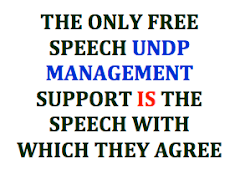



















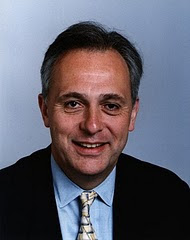
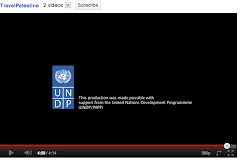





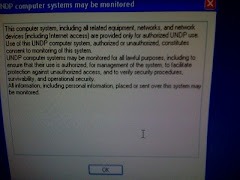


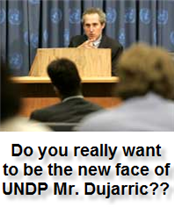





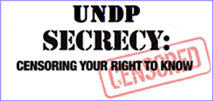
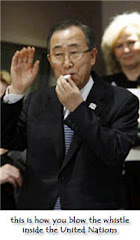
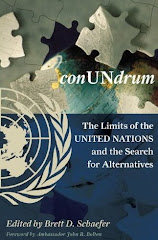

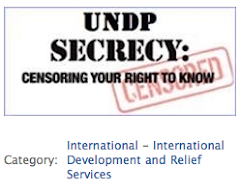

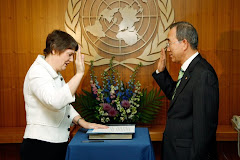


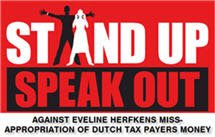


No comments:
Post a Comment